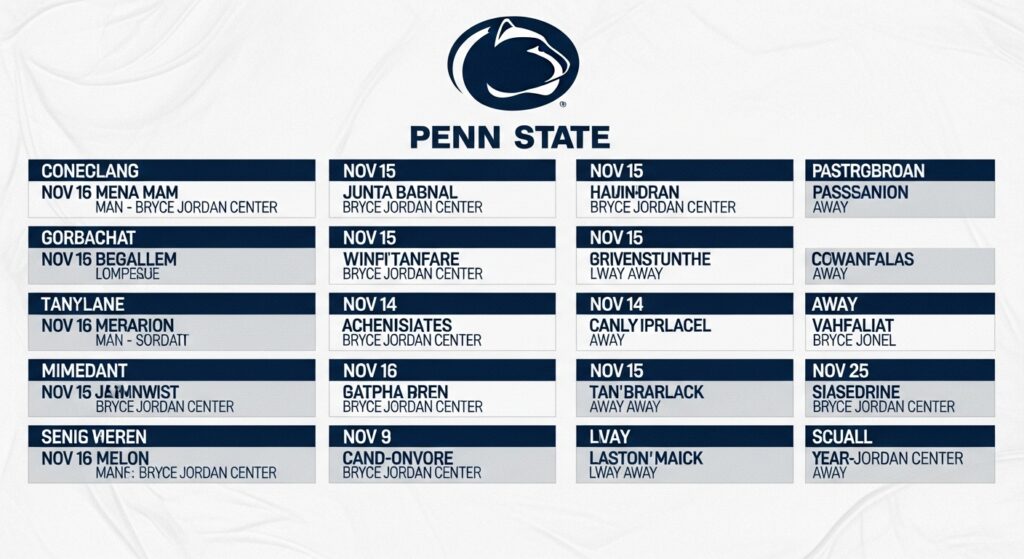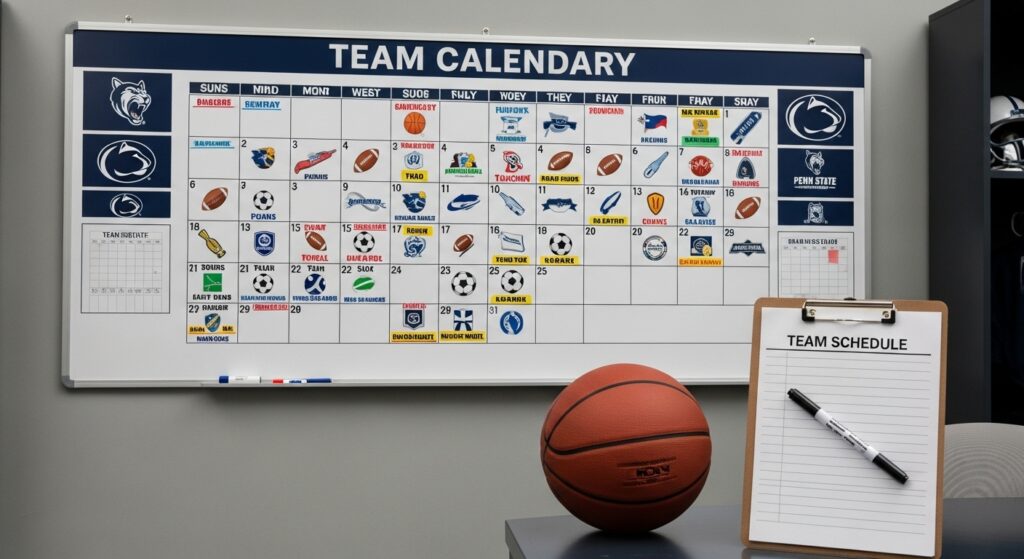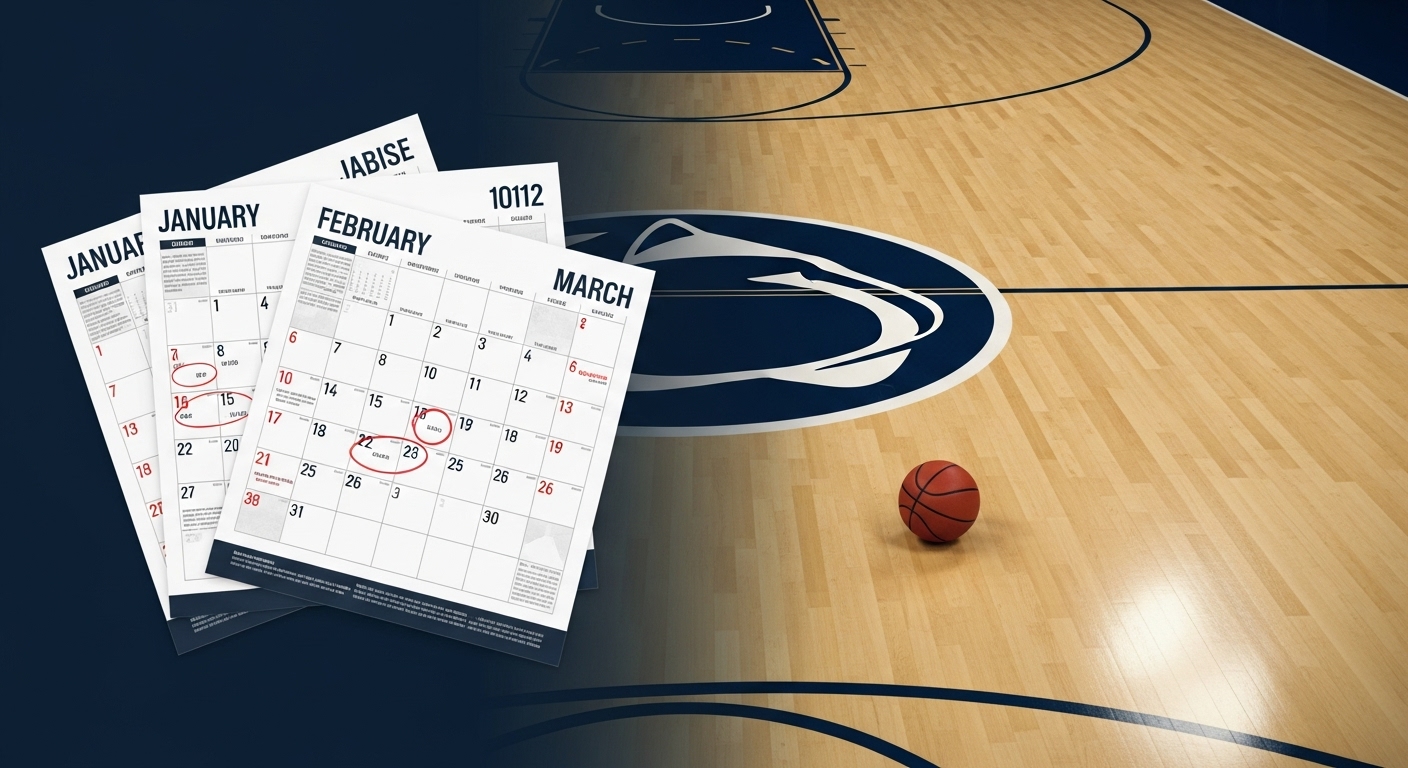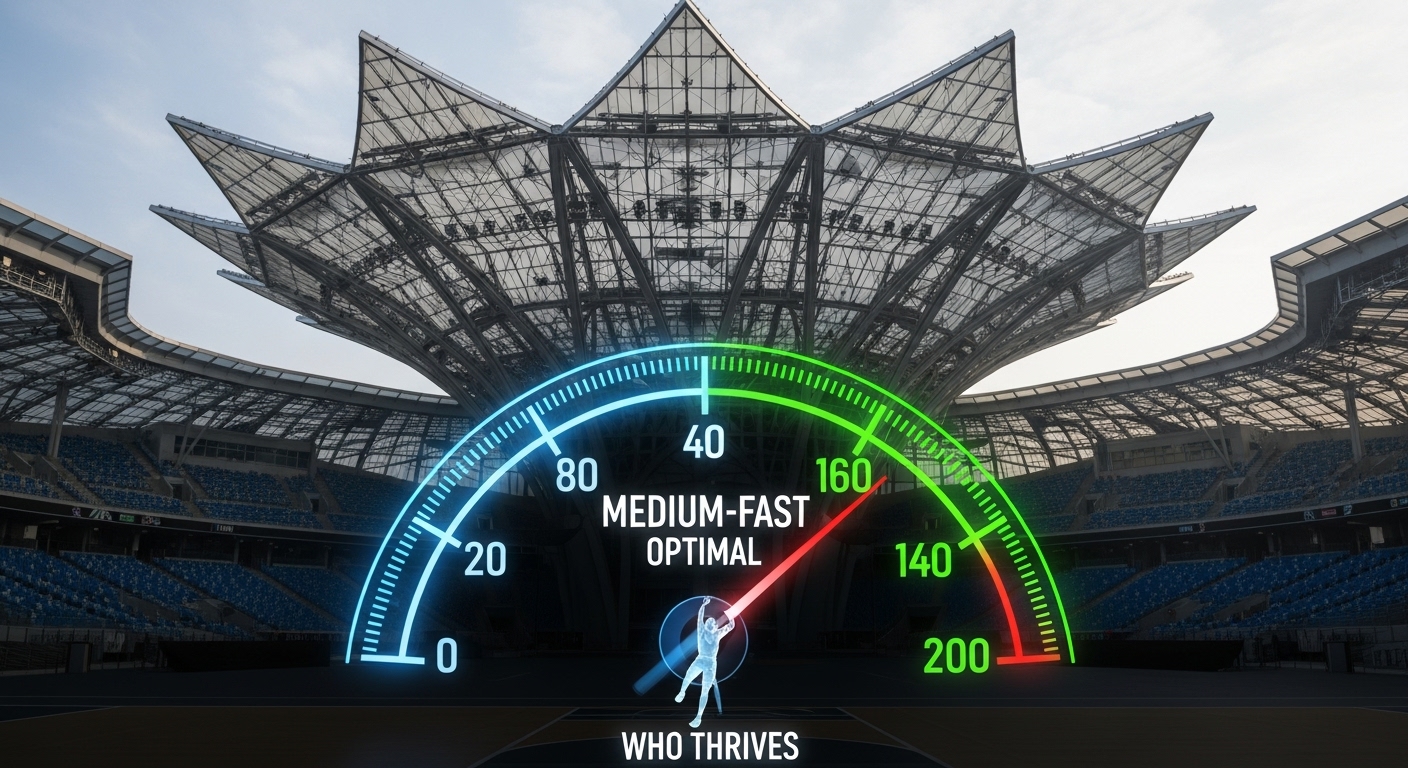I looked at the penn state basketball schedule this morning and, yes, my winter plans are now basically set. Big Ten days. Cold nights. Nittany Lions hoops at the Bryce Jordan Center, home games I can walk to if I bundle up like a marshmallow, and road games that test my patience and my Wi‑Fi. In my experience, the season rhythm starts with non‑conference snacks and then turns into the Big Ten gauntlet. Simple story. Same every year. Still gets me hyped.
How I map out my winter (so I don’t double-book my life again)

I’ve always found the trick is to chunk the season. Non‑conference first. Then the grind. I block off nights, warn friends, and set the coffee maker for the late tip times. I check trends too—like how last year we started hot, then hit that January wall. If you care about patterns the way I do, you’ll like browsing the quick takes in sports trends. It’s nerdy. It helps.
The non-conference chunk: cupcakes, traps, and one scary trip
Every fall, I circle a few games. One easy one where we test rotations. One tricky mid-major that pretends it’s a mid-major. And one true-road game that tells me if the team travels well. I’m not judging a season off November, but I’m definitely taking notes. Shot selection. Turnover habits. Who actually boxes out when it matters.
It’s a bit like how analysts break down detailed player performance stats in pro matchups — patterns and small habits reveal more than the scoreboard ever can. In my head, I’m already guessing which nights in March might be stress nights. Because they always are.
Conference play is the real stress test
Once Big Ten play hits, the mood changes. Less cute. More elbows. I watch how we handle back‑to‑backs and those Sunday-to-Wednesday swings. And yes, I keep a tab on the official grid because times and TV get weird. If you’ve never scrolled the full league slate, the Big Ten page is handy—bookmark the live updates over on the conference schedule. I refresh it way too much. No shame.
Why Timing Can Make or Break a Season

People talk records. I talk timing. When are the toughest road games bunched? Do we get Purdue after they’ve played Michigan State? Does Rutgers ambush us on a Friday night? Timing matters. It flips games. It flips moods. In my notebook (yes, paper), I mark the three‑game stretches that can swing the year. Go 2–1 there, and you feel tall. Go 0–3, and hello dark place.
When there’s a late meltdown or a buzzer-beater, I rewatch the defining sequences. You probably do too. For that, I tend to stash a few links to match highlights so I can argue with my own notes later. I’ll pause, rewind, yell at my screen, and pretend I’d make all those free throws under pressure. Sure, buddy.
Roster, Minutes, and Travel — The Hidden Math of Winning
I’ve learned to pay attention to simple things that swing outcomes. A freshman playing heavy minutes after winter break. A senior finding his shot. A backup big learning to set judicially legal screens. Travel wear-and-tear is real too. Two road games in one week? Legs go. Threes fall short. I check who’s on a heater, who’s tired, who’s quietly confident.
For more behind-the-scenes insights and trends shaping player performance, check out Playzone Gaming Buzz — it’s a fun deep dive into how focus, fatigue, and rhythm affect results, whether on the court or in esports.
If you like knowing who’s actually playing and who might break out, I peek at season snapshots for context. The roster and storyline notes are easy to skim on the team overview here: season preview and roster page. I don’t treat it like gospel. But it’s a good quick read when you’re trying to match names to roles.
Quick table: how I bucket the season
I built a simple cheat sheet I use every year. It’s not fancy. But it keeps me sane when I glance at the slate and wonder why my heart rate is high for no reason.
| Phase | What I Watch For | Typical Vibe | Risk Level |
|---|---|---|---|
| Early Non‑Conference | Rotations, ball security, who’s the late-game adult | Hopeful, a little chaotic | Low |
| Late Non‑Conference | First true road test, rebounding discipline | Reality check | Medium |
| Early Big Ten | Physicality, foul trouble patterns, pace control | Gritty, choppy | High |
| Mid Big Ten | Depth, in-game adjustments, legs on 3s | Survive-and-advance energy | Very High |
| Late Big Ten | Execution, situational awareness, end-of-game sets | Every possession counts | Boss Level |
Home vs. road: the Bryce Jordan split I care about
Home games feel like a warm hoodie. Road games feel like a pop quiz. I track the split each month, because three straight away games can mess with you. If you’re dialed into campus chatter like me, you also keep an eye on other sports that nudge attention and ticket energy. I jump across multi-sport news to see where the vibes point that week. Momentum is a weird thing. It seeps into the building.
The one number nobody talks about enough
Strength-of-schedule matters later. We all know that. But travel clusters matter right now. Three states in seven days? Legs get heavy. So even if the opponents aren’t ranked, the timing still bites. I scribble little stars next to weeks where I expect a flat half. Not to be negative. Just honest. I’ve seen this movie ten seasons in a row.
TV times, late tips, and my coffee math
Late tips mess with routines. With school kids. With me. I set alarms and bribe myself with brownies. I also keep my notes neat so I can write a clean recap in the morning without sounding like a raccoon. If you’re playing brackets or pick’em with friends, you’ll want to track the nooners versus the night caps. I toss my weekly guesses and player props into a folder right next to some fantasy tips. Not gambling wisdom. Just “will my heart take this?” preparation.
Games I already circled (you probably did too)

There’s always a local rivalry game that gets loud. A ranked visitor that walks in like they own the place. A midweek sleeper that nobody fears… until we’re down eight at half. I love those swings. Okay, love is strong. I tolerate them. Barely.
I bet the bracket folks will argue about our Quad 1 chances by January. That’s fine. Bracket talk is candy. I care more about how we look in the last four minutes. Are we calm? Does the ball find the right hands? You can track the public numbers later. For league-by-league context and tip windows, I keep this page in my bookmarks: NCAA team page. It’s a clean snapshot when you need it fast.
My tiny guide to reading the slate without losing your mind
- If the game is on the road and late at night—assume a weird start. It’s science. And also not science.
- If we play a bruiser two days before a finesse team—watch the first five minutes. You’ll know right away if the legs are there.
- If a freshman looks steady in December—circle him for February. Growth spurts aren’t just for height.
- If we win ugly—don’t complain. March is an ugly tournament. Ugly wins travel.
Sample month snapshot (not the full slate, just how I lay it out)
| Date | Opponent | Home/Away | Watch Factor | My Note |
|---|---|---|---|---|
| Sat | Regional Rival | Home | High | Energy game. Bring a throat lozenge. |
| Wed | Mid‑Major With Guards | Away | Medium | Trap alert. Handle the ball. |
| Sun | Top‑25 Big Ten | Away | Very High | Physical. Foul trouble watch. |
| Thu | Streaky Shooter U | Home | Medium | Close out on the wings. |
The “why” behind my optimism, and my caution
I’m not shy about saying this: the team’s ceiling often lives in the two‑minute drill. Can we run a set, get a clean look, make our free throws? I’ve watched enough seasons to know that the schedule shines a light on those habits. And yeah, when someone drops 28 off the bench, I go read more about them and poke around recent athlete spotlights. Stories matter. Confidence matters even more.
Stuff I keep pinned while the season rolls
I keep a couple of tabs open for quick checks when the broadcast is on mute and I’m arguing with my own thoughts. The league update page I already mentioned. The game notes. And when I want a simple, no-frills archive of past seasons, I hop into the stat vaults and remind myself that history repeats, more or less. For the month-to-month narrative and who’s doing what this year, I grab a sip of coffee and scan a few pages. It stops me from yelling “we never do that!” when yes, we have, many times.
And no, I’m not pretending the penn state basketball schedule is the only calendar in town. Other sports steal weekends. Family events pop up. Snow happens. I keep my plan flexible and lean on queues from multi-sport news when the whole campus vibe shifts. It’s a useful sanity check.
What I actually do on game day
I make a tiny list. Keys to win. Keep turnovers under 12. Win the glass. Hit corner 3s. Then I shut up and watch. After, I jot down two lines. One about scheme. One about effort. That way, when we hit that wobbly stretch in late January, I can trace where the wheels got squeaky. It sounds fussy. It’s not. It’s me trying not to overreact to one rough half.
A few more tiny notes I’ve learned the hard way

- When the crowd is loud early, we start strong. Get there on time. It matters.
- If a team plays zone, do not panic. Flash to the nail. Simple basketball. I mutter this to myself out loud.
- Road whistles feel harsh. Adjust sooner, not later.
- Enjoy the small wins: a perfect baseline out-of-bounds play, a late switch that forces a heave. Those are the good snacks.
Oh, and highlights aren’t enough after a wild finish. I want angles, context, the little stuff between the big stuff. I graze through curated clips and fast recaps here and there. They keep the memory honest and the takes slightly less wild. When I don’t have time to rewatch the full broadcast, the quick-hit reel on match highlights does the job. It’s my shortcut on busy nights.
I know someone will ask if the late slate helps tournament chances. The honest answer: it depends how the tough games align. I respect the schedule makers. But they also enjoy chaos. If the heaviest hitters land in a tight cluster, I brace. If the road swing looks kinder, I smile and don’t say it out loud. Superstition. It’s part of the deal.
Anyway, that’s my plan. Coffee. Notes. A little sarcasm. A lot of patience. And the same stubborn belief I carry every year: we’ll find a way to make the big moments count. If not, I’ll be right here, writing it out, snack in hand, pretending my living room seat is lucky.
FAQs I keep getting from friends
- When do Big Ten games usually start?
Early conference games pop up in December, but the heavy run is January and February. TV times move. I check the league slate on that page before I make plans. - Is the non‑conference part easy?
Sometimes. There are cupcake nights, sure. But one mid‑major always shows up mad and hits 12 threes. Happens every year. - How do you keep up with player stories?
I skim quick features and recent athlete spotlights. Helps to know who’s heating up. - Where do you check quick stats during the season?
For a simple snapshot, I hop to the season page. It’s fast when I don’t want to dig. - Any tips for watching late games without dying at school/work the next day?
Small coffee. Bigger water. Notes during timeouts. And don’t doomscroll after the buzzer. Trust me.

I’m Oliver Scott, and I live to bring every sports moment to life. Get breaking multi-sport news, in-depth match highlights, fantasy tips, athlete spotlights, and the latest trends right here.




